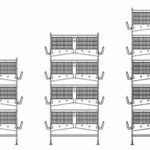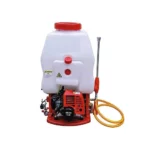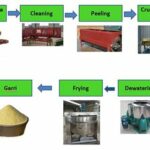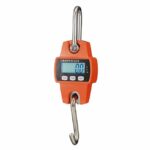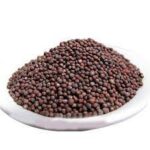In our previous discussion on fish farming where we introduced the practical basis of starting a fish farm, we mentioned the important need for abundant supply of good quality water that is conducive for the health, growth and productivity of your fish species. Fishes are cold-blooded animals who can hardly survive for long outside water, and unlike other animals, they feed and defecate inside the same water they live in. So, just like we humans need the right balance of air quality, temperature and healthy environment to exist, fishes also need the right environmental water quality and balance for them to be healthy and productive. The quality of the water inside which fishes live directly affects their feed efficiency, growth rate, survival and general health. Any fish farmer that wants to record a high survival and record growth for his/her fishes must pay good attention to pond water quality.
Water quality must be closely and regularly monitored at least twice daily (every 12 hours) or as often as possible as a standard measure of biosecurity on your fish farm. This is because water parameters could change at short notices and fishes are extremely sensitive to these slight changes. So, if the changes are not readily taken care of, the fish may die in large numbers causing huge losses to the fish farmer. Also, when water quality depreciates, consumed feed is not properly converted into body flesh and poor growth will be observed.
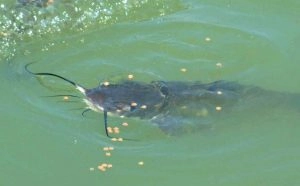
There are 5 important parameters that must be monitored in a commercial catfish farm as they are considered the most important aspects of water quality management. The parameters are as follows;
Dissolved Oxygen (DO)
Dissolved oxygen is the amount of oxygen present in water. The relevance of monitoring the level of dissolved oxygen in ponds is very important because fish breathe in oxygen through their gills for general body metabolism. Also, dissolved oxygen is needed to help breakdown any potentially harmful metabolic waste into less harmful forms e.g., ammonia (NH3) broken down into nitrites (NO2) and then into nitrates (NO3). For our catfish ponds, a farmer should maintain dissolved oxygen levels at around 5mg/liter in the pond. When DO level is consistently between 1.5mg/liter to 4mg/liter, fish will still be alive, but will be stressed and feed intake will reduce. Also, rate of growth will reduce per time as the periods of achieving desired weights in fish will be lengthened which might lead to lower market sales of fish. When Dissolved oxygen levels are lower than 1.5mg/liter, the fish will be highly stressed and will eventually die. The supply of dissolved oxygen for fish may be reduced when there is excess phytoplankton, and mud-dwelling organisms in the pond. These organisms and plants also need oxygen for living and so they compete with fish on the demand for available oxygen. Low dissolved oxygen in pond water can be solved by performing artificial aeration.
Temperature
As mentioned earlier, fish are cold blooded animals and so their body metabolism is greatly influenced by water temperature. An acceptable temperature range for the catfish is 26ºC to 32ºC. Pond water temperatures that stay consistently between 16ºC and 26ºC will increase stress levels and reduce fish intake and growth rate drastically. When catfish are consistently exposed to temperatures below 15ºC, fish growth will ultimately stop and death might be inevitable. However, when water temperature is way above 26ºC, it is equally dangerous for the health of the fish as oxygen is not readily soluble in very warm water and dissolved oxygen levels may be too low for the fish to survive. High temperature will also cause high-level stress to the fish and may kill them.
pH
pH is the level of the Hydrogen ion present in the water. For the catfish, acceptable pH value for their pond is between 6.5 and 7.5. When pH is constantly between 4 and 6, the fishes will be alive but will be highly stressed. Also, feed intake will be reduced and there will be slow growth. When it is below 4, fish will die due to water acidity. High pH values between 9 and 11 will also retard fish growth and fish will ultimately die when pH levels rise above 11.
Carbon dioxide
Carbon dioxide accumulation can occur when there is excess plankton and high fish density in the pond which leads to rapid depletion of dissolved oxygen and simultaneous accumulation of carbon dioxide. As long as concentration levels of dissolved oxygen are high, catfish can survive in waters containing up to at least 60 mg/L dissolved carbon dioxide. Higher concentrations usually cause death but this may be rare because during the day, the process of photosynthesis would remove all the carbon dioxide that has been produced.
Ammonia and Nitrite concentrations
Ammonia is the major nitrogenous waste product excreted by fish. When ammonia begins to accumulate, fish respond with less food intake, leading to lower rates of ammonia excretion and reduced ammonia concentrations in the water. However, ammonia levels can be used to predict the onset of possible nitrite accumulations. Nitrite is an intermediate product in nitrification, which is a transformation of ammonia to nitrate in soils and water. Nitrite accumulates to significant levels in ponds only when ammonia concentrations are relatively high and when the rate of ammonia oxidation to nitrite exceeds the rate of nitrite oxidation to nitrate. Accumulation of nitrite is toxic to fish at relatively low concentrations and can cause large losses of catfish.
 Interestingly, for all the above-mentioned water quality parameters, negative changes in the pond would most likely lead to less feed intake and less activity of the fish. Therefore, monitoring your fish for these signs of feed intake and activity during feeding times is very important as it will give you an instant indication of the living environment and general well-being of your fish. However, you must note that there are causes and signs of these changes that are specific to each parameter and this would be discussed later.
Interestingly, for all the above-mentioned water quality parameters, negative changes in the pond would most likely lead to less feed intake and less activity of the fish. Therefore, monitoring your fish for these signs of feed intake and activity during feeding times is very important as it will give you an instant indication of the living environment and general well-being of your fish. However, you must note that there are causes and signs of these changes that are specific to each parameter and this would be discussed later.
References – MSU Cares and The Fish Site

